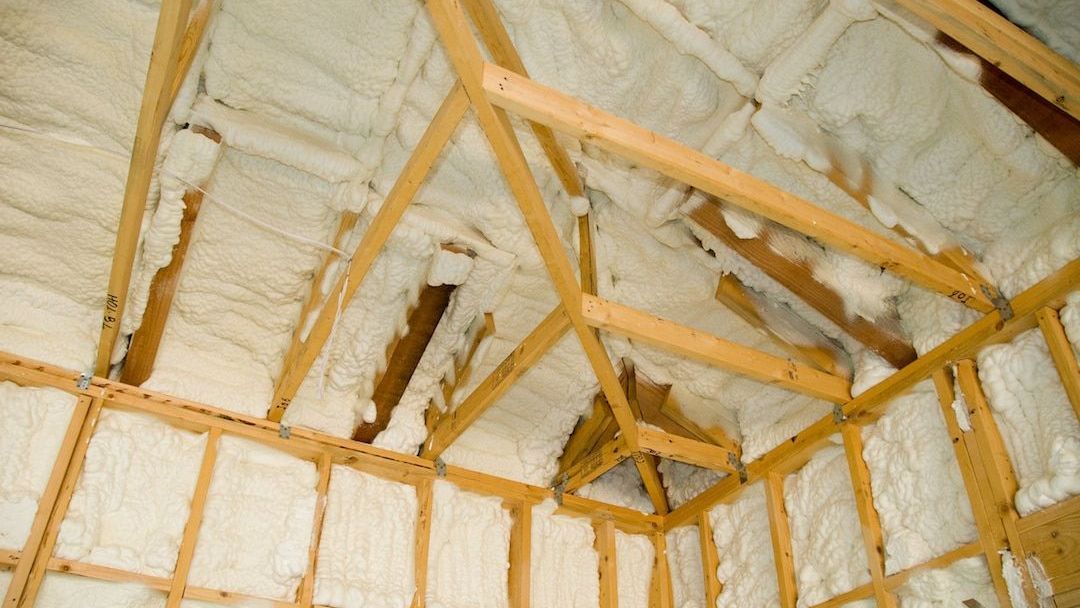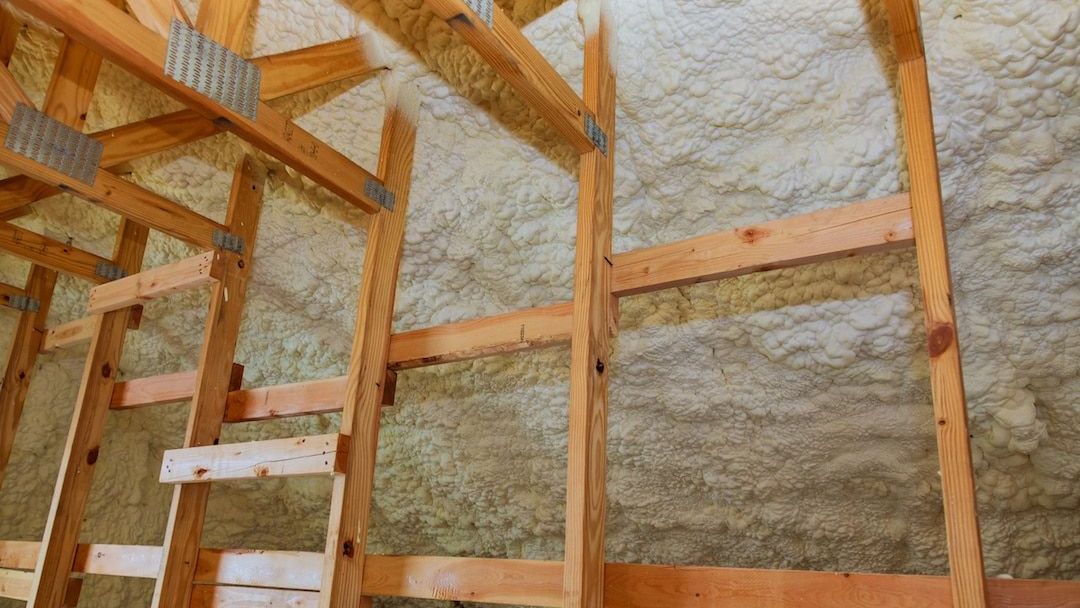Attic Spray Foam Insulation Installation

FAQ: Installing Spray Foam Insulation in Your Attic
What effect will spray foam insulation have on my HVAC system?
Spray foam insulation significantly improves the energy efficiency of your home by sealing air leaks and preventing drafts. This reduces the workload on your HVAC system, leading to lower energy consumption. Your system won’t have to work as hard to maintain consistent indoor temperatures, which may extend its lifespan and reduce maintenance needs. You might also consider resizing your HVAC system to accommodate the increased efficiency, depending on the extent of the insulation upgrade.
How thick should a layer of spray foam insulation be installed?
The thickness of the spray foam insulation depends on the type of foam used and your specific insulation needs. For open-cell foam, the typical thickness is around 6 to 10 inches in attics, providing an R-value of about 20 to 38. For closed-cell foam, a thinner layer of 4 to 6 inches is sufficient, offering an R-value between 24 to 42. A professional installer will assess your attic’s needs and local building codes to determine the optimal thickness.
How much will it cost to install spray foam insulation in my attic?
The cost of spray foam insulation depends on factors like the size of your attic, the type of foam used (open-cell or closed-cell), and your location. On average, installation costs range between $1.50 to $5.00 per square foot for open-cell foam and $1.75 to $7.50 per square foot for closed-cell foam. Additional factors such as accessibility and complexity of the project can also impact the final price. For an accurate estimate, a professional inspection is recommended.
How long will it take to install spray foam insulation in my attic?
The installation process usually takes between one to two days, depending on the size and complexity of the attic. Larger attics or attics with more obstacles (such as ducts and wiring) may require more time. After installation, a curing period of 24 to 48 hours may be necessary before the foam is fully set and functional.
Can I stay in my home while the installation takes place?
Yes, you can generally stay in your home during the installation, but there are some considerations. During the application process, there will be some fumes and potential odors as the spray foam is applied and cures. It is recommended to avoid the attic area while the work is being done and for 24 to 48 hours afterward to allow the foam to fully cure and for the odors to dissipate. Some homeowners choose to stay out of the house temporarily during this time to avoid any discomfort.
Benefits of Attic Spray Foam Insulation
Spray foam insulation is becoming increasingly popular for attic insulation replacement due to its numerous benefits. One of the main advantages of spray foam insulation is its ability to provide a superior air seal compared to traditional insulation materials such as fiberglass or cellulose. This air seal helps to prevent air leakage, which can lead to energy loss and increased heating and cooling costs.
Additionally, attic foam insulation has a high R-value, which is a measure of the insulation's ability to resist heat flow. This means that spray foam insulation can effectively help to regulate the temperature in your attic, keeping it cooler in the summer and warmer in the winter. This can lead to increased comfort in your home and reduced energy bills.
Another benefit of spray foam insulation is its ability to fill in gaps and cracks in your attic, creating a more airtight and efficient insulation barrier. This can help to prevent moisture buildup and reduce the risk of mold and mildew growth in your attic. Furthermore, spray foam insulation is a durable and long-lasting insulation solution. It is resistant to mold, pests, and moisture, making it a low-maintenance option for attic insulation replacement.
Overall, replacing your attic's insulation with spray foam can lead to improved energy efficiency, increased comfort, and a healthier living environment in your home. It is a cost-effective and long-lasting insulation solution that can provide numerous benefits for homeowners.
Our Attic Insulation Installation Process
- Assessment and Planning: Evaluate the attic space to determine the insulation needs and the best approach for installation. Our contractors consider factors such as the attic's size, accessibility, existing insulation, and any potential air leaks or moisture issues.
- Preparation: We will clear the attic space of any obstacles and ensure proper ventilation. Cover any areas that should not receive insulation, such as vents, electrical fixtures, and soffits, to prevent overspray.
- Safety Measures: As with any insulation project, prioritize safety. We wear appropriate personal protective equipment (PPE) such as goggles, gloves, and respirators to protect against exposure to insulation chemicals and ensure that we have proper ventilation in the attic.
- Application: Use specialized spray equipment to apply the spray foam insulation to the underside of the roof deck or directly onto the attic floor, depending on the design and construction of the attic. Ensure even coverage and proper thickness to achieve the desired insulation level.
- Curing: This is the time we all the spray foam insulation to cure and expand fully. This may take several hours, during which the attic space should be kept clear and undisturbed.
- Trimming and Shaping: After the foam has cured, trim away any excess material and shape the insulation as needed to achieve a smooth and even surface. Our team pays special attention to areas around vents, ducts, and other obstructions to ensure proper sealing.
- Quality Check: We conduct a thorough inspection of the installed insulation to ensure that it meets quality standards and effectively seals the attic space. We address any gaps, voids, or areas requiring additional insulation or sealing.
- Cleanup: Clean up the attic space, removing any debris or waste materials generated during the installation process.
- Post-Installation Inspection: Consider conducting a post-installation inspection to verify that the insulation has been installed correctly and meets the desired insulation level and performance criteria.

Revolutionize your living experience with our top-tier spray foam insulation service, designed to elevate your home's energy efficiency and comfort levels to new heights. Our dedicated team of professionals brings years of expertise to every project, ensuring precise installation of high-quality spray foam insulation throughout your entire home. Bid farewell to pesky drafts, soaring energy bills, and uneven indoor temperatures as our meticulously applied insulation seals every nook and cranny, creating a cozy and consistent climate year-round. Not only does our insulation solution enhance your comfort, but it also promotes environmental sustainability by reducing energy waste and lowering your carbon footprint. Rest easy knowing that our comprehensive insulation package is tailored to suit your home's specific needs, providing lasting performance and peace of mind for you and your family. Experience the transformative power of superior insulation with our trusted service. Interested in knowing more? Check out our Blog!





